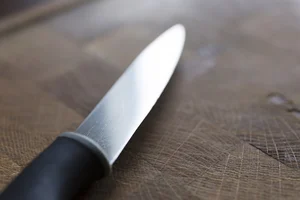
Many people don't often think about the various differences among steel products. Among the most common types are carbon and stainless steel, each possessing distinct characteristics.
Stainless steel is widely used in food production equipment, medical devices, automotive parts, and more. One of its key features is its ability to resist oxidation and rust, unlike many other iron and steel products. Its corrosion resistance, aesthetic appeal, ease of maintenance, and strength make stainless steel a popular choice across numerous applications. When you step into a commercial kitchen or a hospital, the shiny metal panels you see are likely made of stainless steel.
 hbspt.cta._relativeUrls=true;hbspt.cta.load(5163497, '8dce98ee-223d-4c3d-ae39-749a256a8bb6', {"useNewLoader":"true","region":"na1"});
hbspt.cta._relativeUrls=true;hbspt.cta.load(5163497, '8dce98ee-223d-4c3d-ae39-749a256a8bb6', {"useNewLoader":"true","region":"na1"});
In contrast, carbon steel boasts a matte finish and is known for its higher tensile strength and hardness compared to stainless steel. It's commonly used in knives and other cutting tools that require prolonged sharpness. However, carbon steel is prone to oxidizing when exposed to moisture, even in small amounts. Additionally, it's less malleable and adaptable than stainless steel.
Both carbon and stainless steel share iron and carbon as their core components but differ in the addition of alloying elements. Carbon steel contains less than 10.5% chromium, whereas stainless steel must have a chromium content of at least 10.5%.
What Makes Carbon Steel So Strong?
Carbon steel derives its strength primarily from its carbon content, which can reach up to 2.1% of the steel's total weight. The carbon contributes significantly to the steel's enhanced strength. Small amounts of other materials are added to improve specific traits, such as rust resistance, without compromising the steel's overall strength.
To ensure the toughness of carbon steel, the American Iron and Steel Institute (AISI) sets limits on the maximum percentages of other elements, including:
- Copper
- Manganese
- Silicon
Meanwhile, there are no minimum requirements for corrosion-resistant elements like:
- Chromium
- Cobalt
- Nickel
- Titanium
- Tungsten
- Vanadium
Applications of Carbon Steel
Due to its strength and durability, carbon steel's applications depend on its carbon content. Low-carbon steel is often used for items like wrought iron or fencing. Medium-carbon steel plays a crucial role in construction projects such as bridges and buildings. High-carbon steel, on the other hand, is ideal for making coils and steel wires. Its robustness makes it perfect for cutting tools, saws, drills, knives, and other equipment requiring a durable cutting edge.
 hbspt.cta._relativeUrls=true;hbspt.cta.load(5163497, '8dce98ee-223d-4c3d-ae39-749a256a8bb6', {"useNewLoader":"true","region":"na1"});
hbspt.cta._relativeUrls=true;hbspt.cta.load(5163497, '8dce98ee-223d-4c3d-ae39-749a256a8bb6', {"useNewLoader":"true","region":"na1"});

Why Is Stainless Steel Rust-Resistant?
Stainless steel resists rust due to its chromium content, which is at least 10.5%. Chromium forms a protective layer that shields the steel's iron content from moisture exposure. This property makes stainless steel a prime choice for industries that use water extensively during production processes.
Stainless Steel in Piping Systems
Stainless steel's corrosion-resistant qualities make it an ideal material for piping systems in industries like petrochemicals, refining, solar energy, and food processing. Its durability and low maintenance needs further solidify its position as a preferred material for such applications.
APP Manufacturing
For inquiries regarding piping systems and accessories, contact APP, a leading provider of piping solutions. Their team of experts is available to address any technical queries related to industrial pipe designs and materials.
 hbspt.cta._relativeUrls=true;hbspt.cta.load(5163497, '7c3acf31-8ac7-48b6-9095-1fa70d90c2a7', {"useNewLoader":"true","region":"na1"});
hbspt.cta._relativeUrls=true;hbspt.cta.load(5163497, '7c3acf31-8ac7-48b6-9095-1fa70d90c2a7', {"useNewLoader":"true","region":"na1"});
Understanding the differences between carbon steel and stainless steel is vital for selecting the right material for specific applications. Whether you're looking for rust-resistant options or high-strength tools, both materials offer unique benefits that cater to different needs.
1.Rain & Lighting protection
6.Human body induction, when people come on, people leave off, light control + remote control, charging 8 hours, light on 12 hours,strong light 3 hours, low light 6 hours, human body induction 10 hours
Application Highway,Garden,paking lot, park,road, square, etc
Two Types of Installation
1. Wall Installation
2. Mast Installation
IP65 Solar Led Street Light,Solar Street Light With Pole,Solar Led Street Light Outdoor,Led Solar Street Light With Remote
Shenzhen You&My Electronic Technology Co., Ltd , https://www.szyoumylighting.com